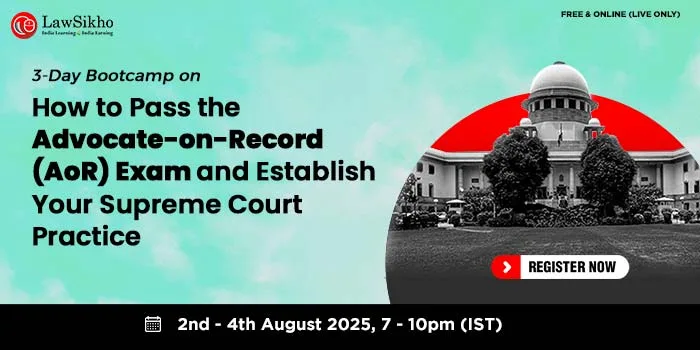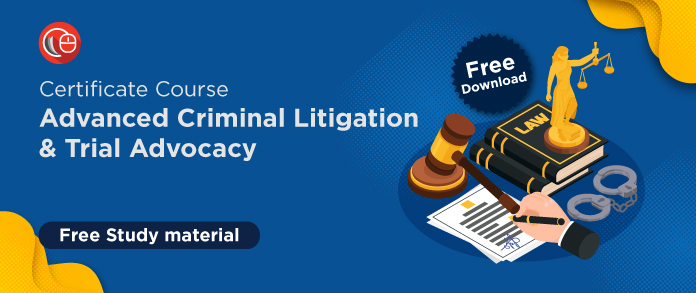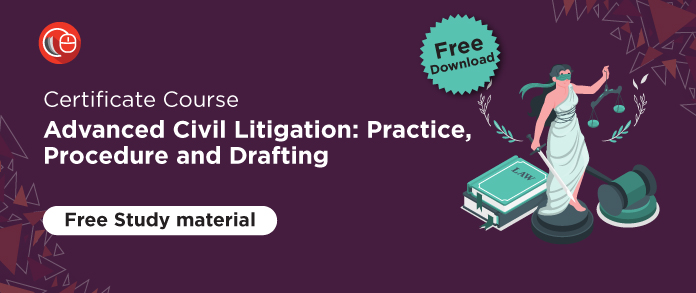This article is written by Ms. Sushree Surekha Choudhury from KIIT School of Law, Bhubaneswar. The article gives an overview of the Stark law in the United States and also discusses the laws governing medical fraud and abuse in the US.
It has been published by Rachit Garg.
Introduction
Tony Stark? Iron Man? Avengers? Well, not really the context. Although, we can imagine Tony Stark making stricter and cooler laws if he were ever into medicine. Well, he was not. So, the government had to come up with its own set of laws. And before you assume, No! It is not in the memory of the bravest Avenger. In this article, we will learn about the ‘Stark’ behind the Stark Law. Were you team Ironman or team Captain America, though?
Medical fraud and abuse are strictly scrutinized and penalized in the US. Several legislations are enacted to protect citizens from medical fraud and abuse. One such law is the Stark Law. The Stark Statute and Regulations are collectively called the Stark Laws. Otherwise known as the Physician Self-Referral Law, the Stark Law is codified under Section 1877 of the Social Security Act (1935). The Stark Law prohibits self-referral of physicians under federal laws. The Stark laws guide the morality of physicians. They guide the physicians to work with integrity. They penalize unlawful self-referrals in the medical industry. They impose restrictions on unlawful financial transactions that the physicians might enter into. For Stark Law to be attracted, the action of the physicians must consist of certain elements that make it fall under a Stark Law violation. The basic elements of the Stark Law include a physician and a referral made by such a physician. Further, they must consist of the elements that make them a referral and not fall within the provided exceptions. The referral then must be for a Designated Health Service (DHS) to qualify for consideration under Stark Law.
An overview of Stark Law
Stark Law does not consider referrals that do not qualify as DHS. They are only concerned about a referral for DHS. Further, the DHS entity and the physician who referred such treatment must have a financial relationship to attract violation. A financial relationship could be direct or indirect. It could be in the form of investment or compensation. It could be a direct interest from an investment or through a family member. Any referral made for DHS to an entity that does not hold a financial relationship with the physician does not amount to a Stark Law violation.
Further, the Stark Law is applicable only when a claim for medical treatment has been collected from the federal healthcare programs. Stark Law is applicable when the entity or physician gains illicit profit from making improper claims from the federal Medicare programs. Additionally, there are several exceptions made for Stark Law’s application. Certain types of arrangements, compensation schemes, public welfare schemes, and personal contracts can be kept out of the ambit of Stark law. It has to be proved in a court of law that the said arrangement falls within the exceptions to the law. Stark law is a civil law in nature, and a violation leads to penalties (monetary compensation). It follows a strict liability model. Thus, the presence or absence of intention and knowledge plays no part in the implementation of the law. We shall learn about Stark Law in detail in this article.
Stark Law : an insight
Medical fraud and abuse are strictly scrutinized and punished in the US. The federal government makes and enforces several laws to monitor and restrict medical abuses and fraud. These laws are civil laws and are penalized with monetary compensation. One such law that protects patients against medical fraud and abuse by physicians by referring them to other physicians or entities with whom they have a financial relationship is the Stark law. The Stark Law was enacted to fulfill the following objectives:
- It was enacted to ensure that patients are not abused by medical professionals for unrequired referrals.
- It helps them to keep decisions regarding their medical treatments free from being influenced by the monetary gains of physicians.
- This law is in place to prevent physicians from referring patients to medical treatments or services that they do not actually need.
The US Department of Health and Human Services has included the Stark Law as one of the top most important laws in the US related to federal fraud and abuse by physicians. The Officer and Inspector General (OIG) of the US Department of Health and Human Services, the Center for Medicare and Medicaid Services (CMS), and the US Department of Justice have the right to enforce these laws. The Stark law is civil by nature. Violations are punished with penalties and not imprisonment or any other form of punishment prescribed for criminal offenses.
A brief history behind the formulation of the law
Apart from its incorporation into the Social Security Act (1935), the Stark Law, also called the Ethics in Patient Referral Act (1989), became effective on January 1, 1992. It is named after Congressman Pete Stark, who first proposed and sponsored the law. This came to be known as the Stark I Law, which restricted physicians from prescribing clinical lab services for patients from an entity with whom the physician directly, or through a family member, had a financial relationship.
In 1995, the Stark law was applied to laboratory treatments. Through phases of expansions and discussions in 2001, 2004, and 2007, the Stark I Law developed and expanded to include more services named Designated Health Services (DHS). This came to be known as the Stark II regulations.
Stark II Law
The Stark II Law expanded the Designated Health Services (DHS) and made several changes to the federal policies. It also removed the rule of “direct supervision” to a new system of a ‘more flexible supervision standard’ requiring ‘supervision under medical payment rules.’
Further, the concept of group practice was altered. This allowed the group practices to have more flexibility in distributing the income from DHS. It allowed the group practices to use cost revenue centers for different purposes. Under the direct supervision rule, whenever a physician in a group practice referred to another in their group, either of those physicians had to be physically present to supervise anything done by a non-physician. This mandatory requirement was changed by the Stark II proposal.
The law prohibits physicians from referring healthcare services to entities where they gain direct or indirect financial benefits. This financial relationship can be direct or through a family member and is divided into two categories:
- The financial benefit from ownership or investment interests, and/or
- The financial benefit from compensation arrangements.
While the Stark I Law only covered clinical laboratory services, Stark II included radiology, ultrasound, physical therapy, occupational therapy, etc. The new rules also expanded rights and provisions for independent contractor physicians.
Further, an exception of “fair market value” was added to the compensation arrangements under the financial relationship. This was added to the exception of services where the referred medical treatment is not vague but genuine. Pete Stark explained this exception by saying that no physician would refer someone for cataract surgery to gain benefits from the post-surgery lenses. Thus, the fair market value exception was added in the case of a genuine referral.
Essential features of the Stark Law
The intent of the legislation against medical fraud and abuse is to prevent people from suffering at the hands of physicians who try to get monetary benefits at the cost of their patients’ health, suffering, and life. The essential features, elements, and the primary intent behind making the Stark Law is to:
Prevent unnecessary use of medical services
When physicians refer their patients to certain healthcare services that are unnecessary and not truly needed as a part of their treatment, this leads to overutilization of medical devices and services. It also leads to unnecessary expenses incurred by both the patients and the state. The Stark Law aims to prevent this.
Prevent unnecessary increases in costs for Medicare and Medicaid Services
Physicians who make referrals to retain financial gains from patients covered by state healthcare programs are covered under the Stark Law. This is when the Stark Law is applicable. Such unnecessary referrals put a monetary burden on the state’s Medicare and Medicaid programs and services.
Prevent harm that can occur due to unnecessary medical treatments
Referrals made by physicians for certain tests or treatments to be conducted on a patient who is not truly required to be performed on those patients lead to health compromises and risks. For instance, if a patient is referred for radiation therapy but does not truly require it, it will lead to several health issues for that patient.
Prevent unfair and unhealthy competition in the medical industry
Illicit referrals by physicians also create a bad market condition. This has a tendency to corrupt the minds of genuine physicians who are trying to survive in the market. They may be driven by the desire to make as much money as their competitors are making, making them resort to unfair means to do so.
Basic elements of the Stark Law
The basic elements of the Stark Law are as follows:
- It applies to physicians in the medical industry,
- A physician is disallowed under the law to refer a patient for medical treatment,
- Such referral must be made to a business entity,
- Such entity must be directly or indirectly related to the physician who referred the patient,
- The relationship between the entity and the physician must be financial in nature,
- Referrals made must fall under the categories mentioned as Designated Health Services (DHS),
- Stark law prohibits billing for medicare or insurance services in the case of an unlawful referral.
Violation of Stark Law
For punishing an act under the Stark Law, it is essential to first determine whether an act or referral is falling within the ambit of Stark Law violations. For a violation to attract the Stark Law, it must have the characteristic features, like referrals being made by physicians, that are regarded as unlawful and unethical under the Stark Law.
The violations are examined on a case-to-case basis. The Office of Inspector-General (OIG) of the Department of Health and Human Services conducts an assessment for violation of Stark law and prescribes the amount of penalty. The intention of the physician is immaterial in Stark law. Even an act done in good faith and without any mala fide intention does not protect the physician. Stark law imposes strict civil liability for violations. Further, not all referrals are violations of Stark law. A referral that does not fall within any of the categories of the DHS would not attract liability. CMS also allows providers to report Stark violations through a Medicare self-referral disclosure protocol.
Consequences of violation of the Stark Law
Violation of the Stark Law is regarded as a civil wrong in the US. It is regarded as strict liability. Under the principle of strict liability, the person who violates the law shall be held liable and punished irrespective of the intention and knowledge he possesses. An improper or illicit referral is enough to establish liability. Physicians may be punished by banishment from federal healthcare programs. The following consequences follow the violations of the Stark Law:
Payment denial
When an act of a physician is categorized as a violation of the Stark Law by qualifying as a referral to a DHS entity, the Medicare program denies payment for such designated health services. The referral must first prove to have the elements that qualify it as a DHS.
Payment refund
If a payment has already been made by a Medicare program for an act of self-referral by a physician that falls within the prohibited category of DHS, the payment is required to be refunded. The DHS entity that has received such payments must now refund the funds to the Medicare program.
Monetary penalties
The Centers for Medicare and Medicaid Services (CMS) impose civil monetary penalties on a DHS entity for violating the Stark Law. When a physician refers to a prohibited self-referral and the DHS entity thereby receives payment from a Medicare program, with or without knowledge, it is subject to civil fines. The DHS entity is required by law to pay a penalty of $15,000 for each time such a payment is made or service is availed. Further, if the payment involves a circumvention of the law, it attracts a civil penalty of $100,000 for each circumvention. A circumvention is severely penalized since the doer had both intention and knowledge for doing so. Monetary penalties can go as much as up to three times the payments received by the DHS entity or any person deceitfully.
A prohibition from state healthcare programs
The person or entity who is found guilty of violating the Stark Law can be prohibited from availing benefits under the state healthcare programs and federal Medicare programs.
Exceptions to the Stark Law
There are exceptions to the implementation of the Stark Law. These exceptions are embedded in 42 CFR Section 411.357, Chapter IV, Title 42 of CMS. These are:
Exception of personal service arrangement
One such exception [S.411.357, clause(d)] is the personal service arrangement exception. To be able to take defense under this exception, the following elements have to be proven:
- The personal service arrangement must be in writing,
- It must be duly signed by the parties to the arrangement,
- The written arrangement must specify the services for which the personal arrangement has been entered into,
- The written arrangement must specify all the services that the physician, a family member, or a referred entity shall perform,
- It must be verified and established that the services entered into for the personal arrangement must be reasonable and deemed necessary,
- The personal arrangement must be for at least one year,
- The compensation for the personal arrangement must be pre-decided,
- The compensation must adhere to fair market value standards,
- The arrangement must not bear any ulterior motive,
- The arrangement must not be for promoting the business of the referral entity,
- The arrangement must not violate other provisions of the Stark Law,
- The arrangement and its terms must not violate the laws of the state.
Exception of physician’s services
When a physician refers to another, directly or under his supervision, to provide services to a patient, such referral would not amount to a violation of the Stark Law if both the physicians belong to the same group practice. [S.411.357, clause (d)(i)]
Exception of a prepaid plan
When an entity provides referral services via a contract made with such an individual, it does not amount to a violation of the Stark Law. Such a contract must be made as per Section 1876 of the Social Security Act of 1935. A contract or arrangement made based on provisions under Section 1833(a)(1)(A) of the Social Security Act of 1935 further attracts exception. Any other arrangement for prepaid payments under the Social Security Act (1935), entered between an enrolled individual and a physician that refers to an entity, shall fall under the exception to the Stark Law.
Per click leasing arrangements
Click leasing arrangements allow four exceptions, namely, the office space exception, the equipment lease exception, the fair market value exception, and the indirect compensation arrangement exception. As of 2009, physicians and DHS providers would not be permitted to enter into a click arrangement for office spaces and equipment leases. The Inpatient Prospective Payment System (IPPS), 2009 changed this exception. It removed the click arrangements for leasing pieces of equipment and real estate from the list of exceptions. [S. 411.357, clause (a)]
Percentage-based arrangements
Arrangements by physicians were given an exception for percentage-based arrangements on items and services. This was modified in October 2009. Except for the rental of office spaces and/or equipment, percentage-based arrangements on other items or services are no longer treated as an exception to the Stark law. However, the CMS is of the opinion that they could further relax the prohibitions on percentage-based arrangements beyond office space rentals and equipment. This relaxation will be allowed on billing services and other non-professional services under supervision. [73 F.R. 48433]
Exception on lithotripsy arrangements
As prohibitions on referrals under the Stark Law are limited to the components of DHS, it makes an exception for lithotripsy arrangements since they do not fall within the category of DHS. It was decided in the case of American Lithotripsy Soc. v. Thompson (2002) that lithotripsy would not be considered a DHS. Even a per-click leasing agreement would not apply to lithotripsy arrangements. [73 F.R. 48730]
Exception of professional courtesy
Yet another recognized exception [S. 411.357, clause (s)] to the Stark Law is the exception of professional courtesy. CMS validates a professional courtesy arrangement for physicians and their family members. Professional courtesy arrangements must consist of the following elements:
- The exception is applicable to all physicians in the medical fraternity,
- This exception is applicable to all medical items and services provided by an entity,
- A professional courtesy arrangement must be made in writing,
- A professional courtesy arrangement must get approval from a competent authority,
- The arrangement under this exception cannot be availed by a physician or his family member who is already availing of healthcare benefits through the federal healthcare program,
- Such an arrangement must not violate any law preventing medical fraud and abuse,
- Such an arrangement must not violate federal laws.
Exception of retention payments
Under the provisions of this exception, a hospital or a medical service center empowered by federal law can make payments to physicians to retain them in a particular geographical area. This exception can be invoked when a physician has to relocate to an area 25 miles or beyond the entity’s geographical location. A bona fide intention has to be proven in writing and with certification. This area is determined by several factors, including the location of the entity, urban or rural areas, or areas facing a shortage of healthcare professionals. If a particular place has 75% of a physician’s patients, it would qualify to be a geographical service area under this exception. [S. 411.354, clause (t)]
Exception of mission support payments
DHS entities make mission support payments [S. 411.354, clause(c), 355(e)] to their registered users. These support payments may be used for causes like medical research, social work in the form of medical benefits to different communities, awareness and education, etc. All of these are covered under the Academic Medical Center (AMC) exception. It is treated as a safe harbor under the DHS, and thus, the ambit of this exception is wide. It must contain elements to prove the absence of a financial relationship between the paying entity and its beneficiary. The following elements have to be strictly proven to get benefits under this exception:
- The entity should make mission support payments directly to the beneficiary,
- The beneficiary affiliate’s ownership must not be vested in any related physician,
- This payment is nowhere related to referral compensation made to a physician’s employees.
Exception for publicly traded companies
The ambit of financial relationships excludes ownership or investment made through the channels of stock exchanges. A purchase of shares and securities of the DHS entity from national stock exchanges would not be termed as a referral for financial benefit. These stocks may be purchased from NASDAQ or an automated dealer quotation system by the National Association of Securities Dealers (NASD). One prerequisite is that this entity must have $75 million or more worth of equity by the end of a fiscal year. [S. 411.356(a)]
Exception of isolated arrangements
Physicians may enter into a specific separate transactional arrangement [S. 411.357(f)] with a DHS entity if the following prerequisites are made:
- The arrangement must be for a fair market value,
- The arrangement must not be for promoting the DHS entity’s business,
- The arrangement must be fair and reasonable in a way that it would be held valid even in the absence of a referral,
- No other transaction between the physician and the DHS entity should be made within 6 months from the date of fulfillment of the isolated arrangement.
Isolated payments may also be made in the form of installments. Payments are secured, the amount is priorly fixed and it does not consider other businesses made using referrals.
Other exceptions to the Stark Law are as follows
- Arrangements under which physicians get non-monetary remuneration in exchange for e-prescription information do not violate the Stark Law. [S. 411.357(k)]
- Temporary moratoriums on physical referrals to certain specialty hospitals with which a physician has a financial relationship do not amount to a violation of the Stark Law. [S. 411.357]
- A bona fide employment arrangement is an exception to the Stark Law. [S. 411.357(c)]
- Ancillary services in offices come under the exceptions of the Stark Law. [S. 411.352]
- Splitting benefits or profits among physicians of the same group practice would not be considered a violation of the Stark Law. [S. 411.357(h)]
However, the exceptions are valid subject to their adherence to federal law and other necessary medical laws. These exceptions are allowed only when the minimum standards are met.
What constitutes a ‘referral’ under the Stark Law
A violation of the Stark law occurs when a referral is made by a physician. It is an essential element to establish a violation. Not every activity of a physician amounts to a violation. A referral is a must. A referral as per the Stark Law is determined when it possesses the following features and characteristics:
- A referral is in the form of an order, a request, or a certification for a specific medical treatment. This can either be to prescribe medical treatment from an entity with which the physician has a direct or indirect financial relationship, or in the form of a prescribed consultation from another physician.
- A treatment performed or service provided by a physician himself does not amount to a referral to DHS.
- Some referrals from radiologists, pathologists, and radiation oncologists are not treated as referrals. A pathologist writing for a laboratory test or pathological examination is not a referral. A radiologist writing for a radiology diagnosis is not a referral. Prescribed radiation therapy is not a referral. These tests and services are not referrals when they are made through requests or consultations from another physician. Tests and services are not referrals when they are made under the supervision of another radiologist, pathologist, or oncologist in the same group practice.
- Any other compensation arrangement as provided under the exceptions of the Stark Law would not amount to a referral.
- The Stark Law applies only to those who are registered as federal Medicare beneficiaries. Referrals made to a patient that does not avail of federal healthcare services are not bound by the Stark Law.
- Further, the Stark Law applies only to designated health services. It does not extend to healthcare services beyond DHS.
What constitutes a Designated Health Services (DHS) under the Stark law
The following constitutes a Designated Health Services (DHS) under the Stark Law:
- Clinical laboratory services (Stark I regulations),
- Physical therapy,
- Occupational therapy,
- Outpatient speech-language pathology services,
- Radiology and other related services, except the following are DHS:
- X-ray, fluoroscopy, ultrasound, and other procedures that include the insertion of tubes or needles into the body,
- Imaging services that do not fall into the category of radiology under CPT/HCPCS codes of radiology.
- Radiation therapy and services,
- Durable medical instruments and medical services,
- Parenteral and enteral equipment and supplies,
- Orthotics and prosthetics services,
- Health services at home,
- Outpatient drug prescriptions,
- Inpatient and outpatient medical services.
Case laws
The Stark law has been functioning in the US for a long time. It has also been widely implemented, and violations have been penalized. The following case laws are instances of the application of the Stark Law in the US:
Amedisys Home Health Case (2014)
In a settlement, the Amedisys Home Health service provider agreed to pay $150 million because the service provider was found guilty of violating the Stark Law. The service provider had made unlawful referrals and taken money from the Medicare programs during 2008-2010. The home health service provider also violated the False Claims Act as they submitted false billings to the state Medicare program and received compensation. The US Department of Justice, while compromising this settlement, reiterated the importance of federal Medicare services. The Assistant Attorney General of the Civil Division stated that state money should go to quality home service providers. The home healthcare service provider had direct financial relationships with referring physicians who referred their services to patients. The physicians and this service provider shared financial gains from this arrangement.
Halifax Hospital Medical Center case (2014)
In this case, the healthcare center was violating the Stark Law and other medical laws intentionally. They entered into illegal contracts with medical service providers. These contracts made provisions for illegal referrals and other financial bonuses. This money came from claims made to Medicare programs. The center had to pay a penalty of $85 million. The center had violated the Stark Law with mala fide intention and knowledge of doing so. It had made illicit contracts with 6 oncologists who referred patients to the medical center in exchange for bonuses and financial gains. This included tests and prescribing medicinal drugs from the center. This case included grave violations as it not only violated the laws intentionally but also put at risk on the lives and wellbeing of its patients. The center had also violated federal laws by paying some neurosurgeons more than what is determined as a fair market value. In 2013, the US District Court of Florida decided that the action of the medical center is a Stark law violation. In 2014, the medical center agreed on a settlement to pay $85 million as compensation. Thereafter, the center also entered into a Corporate Integrity Agreement with the US Department of Health and Human Services Office of Inspector-General (HHS-OIG).
Baldwin Bone and Joint case (2019)
In this case, the healthcare company was alleged for making improper claims from Medicare services. The surgeons and therapists were prescribing healthcare treatments to patients but they were found to have not licensed their services. These were regarded as violating the Stark Law, and thus, had to pay a compensation of $1.2 million. The healthcare company also violated the False Claims Act. This was after a lawsuit was filed against the company by a former employee of the company in the Southern District of Alabama. The healthcare company had taken money illicitly from the state Medicare and Medicaid programs. The Defense Criminal Investigative Service also participated in the investigation process apart from the HHS-OIG. The Agent in charge of HHS-OIG stated that these referrals and claims harmed patients and put potential risk to their health. Additionally, they also harmed the beneficiaries of the state Medicare programs by wrongfully using state funds for Medicare and Medicaid Services.
Other laws dealing with medical fraud and abuse in the US
Medical fraud and abuse can cause potential risks to healthcare beneficiaries, and their well-being and incur losses to taxpayers and beneficiaries who avail themselves of state medicare services. The federation and federal laws entrust these physicians to provide honest services in the medical fraternity and make proper utilization of the federal healthcare programs in order to benefit those in need of it. While this is ideal, many physicians are also accused of conducting medical fraud and abuse. They cheat patients to gain monetary benefits by violating codes of conduct. They make improper and illicit deals and contracts with various service providers in the chain of providers in the medical industry in exchange for financial gains. These activities led to the need of forming laws to govern and restrict medical frauds and abuses in the US.
Medical fraud is said to be conducted by physicians when they knowingly and intentionally make false claims to receive monetary compensation from the state Medicare services. This includes acts of referring, receiving, paying, or claiming money in form of kickbacks, referrals, or other forms of remuneration from federal healthcare programs. Some fraud includes physicians claiming more money than the fair market value of the service provided or treatment done. Fraud includes tampering with records to make illicit claims, referring designated health services to patients that do not need to undergo that treatment, and it also includes billing medicare programs for appointments even when the patient did not show up. Medical fraud and compromising with federal medicare programs is a federal crime in the US and it attracts civil liability, criminal liability, and administrative liability depending on the facts and circumstances of the case.
Medical abuse essentially means the abuse of federal healthcare programs by making false claims. Unnecessary billings, false billings, billing higher than the charges incurred, tampering with codes, etc., are all forms of medical abuse. Thus, federal law had enacted legislation to deal with medical fraud and abuses, and punish for violations.
Apart from the Stark Law that has been discussed broadly in this article, the following statutes deal with medical fraud and abuse in the US:
Anti-Kickback Statute [42 United States Code Section 1320a-7b(b)]
Unlike the Stark law, the Anti-Kickback Statute provides for criminal liability. It is a criminal statute. It prohibits illicit and illegal remuneration gained from patient referrals or through the services of federal healthcare programs. These services may include prescription drugs, medical tests, healthcare services, and supplies from the state for Medicare and Medicaid beneficiaries. The statute punishes illicit non-monetary benefits in the form of remuneration. These can be in the form of free services, rent-free stays, accommodations, travel expenses, meals, high compensation for basic healthcare services, consultancies, etc. Payment is done in the form of rewards in exchange for referrals.
Under the Anti-Kickback Statute, these rewards for referrals are criminal offenses against the state and patients. These rewards for referrals are termed as ‘kickbacks’ under the statute. Receiving remuneration as well as soliciting such remuneration is an offense under this law. The Anti-Kickback Statute also imposes administrative liabilities. These punishments (criminal and administrative) are in the form of fines and imprisonment for a specific period, and sometimes lead to the federal state excluding these offenders (physicians and entities) from state healthcare benefit programs. The Civil Monetary Penalties Law prescribes a fine of $50,000 for each kickback and an amount equaling up to three times the value of the false gains.
There are certain safe harbors that protect physicians from medical abuse and fraud laws in the US. If a healthcare contract is made in consonance with the safe harbor principles, the offender can escape liability as an exception. The safe harbor regulations have been enforced by the HHS-OIG. Contracts made under safe harbor principles should possess the following characteristics:
- They must be made for a minimum of 1 year,
- They must be made in writing,
- They must be signed by both the consenting parties,
- They must pre-determine the amount to be paid in the contract,
- They must adhere to the fair market value principle,
- They must not use this amount to increase the value of a business,
- They must specifically state the services to be performed and their terms, and
- They must be reasonable and fair, commercially.
False Claims Act (31 United States Code Sections 3729-3733)
Whenever a physician makes false claims to state healthcare programs, he can be booked for violating the False Claims Act (1863). This legislation provides civil monetary penalties to physicians who are found guilty of violating federal law by making wrongful claims and gains. The False Claims Act protects the federal government from being falsely charged for money or services based on improper claims by fraudulent physicians. This Act makes it illegal for physicians to make claims that they know to be false about federal healthcare and Medicare programs. False claims made by physicians attract civil monetary penalties of $11,000 for each false claim or up to three times the amount claimed falsely. A person charged with a violation of the False Claims Act can be simultaneously charged with violating the Anti-Kickback Statute or the Physicians Self-Referral Law (Stark law).
The False Claims Act imposes strict liability. This means that physicians guilty under the False Claims Act shall be held liable irrespective of having or not having an intention and knowledge of the fraudulent act. A wrong caused due to negligence or recklessness would also constitute an offense under this act.
The False Claims Act makes a special provision for whistleblowers that allows individuals to report illicit claims or activities carried out by companies or individuals. These individuals can file and fight a lawsuit against the fraudulent individual or company on behalf of the United States, and they are further entitled to monetary rewards from the penalty paid by the erring party. Such whistleblowers could be present or former employees, partners, directors, staff, or competitors in the market.
There are also provisions for the criminal False Claims Act that impose criminal liability and inflict criminal fines and imprisonment as punishment. People found guilty under these rules can be put behind bars for infringement.
Exclusion Statute (42 United States Code Section 1320a-7)
The Office of Inspector-General of the Department of Health and Human Services, under the provisions of the Exclusion Statutes, excludes offenders of medical fraud and abuses from federal healthcare and Medicare programs. Under the Exclusion Statute, the following people are excluded from state healthcare programs:
- Physicians who conducted Medicare and Medicaid fraud and other related offenses,
- Physicians who are guilty of abusing or neglecting their patients and putting their lives at risk,
- Physicians guilty of other healthcare fraud, theft, or financial misconduct, and
- Persons guilty of unlawfully making, distributing, selling, or prescribing controlled substances.
The OIG has discretion in excluding physicians from federal healthcare benefits on the aforementioned grounds. These physicians would not receive any remuneration, compensation, or services from the CMS or other federal Medicare services. They cannot bill their patients’ federal Medicare programs. This includes a group practice, meaning a barred physician can neither bill patients directly through Medicare programs nor through group practices. Even a private prescription given to a patient would not be reimbursed by federal facilities.
Civil Monetary Penalties Law (42 United States Code Section 1320a-7b)
Based on violations under various statutes and laws governing medical fraud and abuse, the OIG prescribes civil monetary penalties for the offenders. This varies with the gravity of the offense and the nature of the violation. Penalties are imposed on each act of violation and also as a whole. Penalties for each violation range somewhere from $10,000 to $50,000. The following could be termed violations that attract monetary penalties under the law:
- When a physician intentionally claims compensation for a treatment or service that does not fall within the ambit of Medicare programs to be compensated.
- When a physician violated the Stark law by referring patients for financial gains.
- When a physician violates the Anti-Kickback Statute by taking unfair kickbacks.
- When a physician violates the provisions of state Medicare and Medicaid programs.
- When a physician gives false and misleading information to patients, or in Medicare claims.
- When a physician makes misstatements or misconduct in providing honest services.
- When a physician’s personal contracts are not at par with medical laws or remuneration fixed is above the fair market value.
Stark laws and Anti-Kickback Statute: distinction
Both the Stark law and the Anti-Kickback Statute protect against medical fraud and abuse by physicians towards their patients. These laws are distinct from one another in certain aspects, like:
| Point of distinction | Stark Law | Anti-Kickback Statute |
| Nature of penalty | The Stark Law imposes civil penalties on offenders. | Liability under the Anti-Kickback Statute is criminal in nature. |
| Application | The Stark Law applies to physicians only when they possess a financial relationship with a DHS entity and thereby make referrals for monetary gains. | The Anti-Kickback Statute is applicable to all physicians alike. |
| Liability | The Stark Law imposes strict liability. Thus, it does not consider the intention and knowledge of physicians who have committed an offense under the law. | The Anti-Kickback Statute, on other hand, takes intention and knowledge into consideration. An offense is constituted only in presence of intention and knowledge. |
Conclusion
Medical fraud and abuse are strictly penalized in the US. This is done through various laws, regulations, and legislation. One such law is the Stark Law, or the Physician Self-Referral Law. The Stark Law prohibits physicians from referring patients to designated health services from entities that a physician has a direct or indirect financial relationship with. This referral comes at a risk to the patient’s life and well-being and exhausts the resources of federal healthcare programs unnecessarily. This is why the Stark Law prohibits such acts of physicians by penalizing them with monetary compensation. The strictness of the Stark Law can be understood by the fact that it imposes strict liability on offenders.
Frequently Asked Questions (FAQs)
Who is a physician under the Stark Law?
A physician within the ambit of the Stark law consists of a doctor of medicine, a doctor of osteopathy, a dentist (medicine or surgery), a doctor of optometry, and/or a chiropractor.
Who qualifies as an ‘immediate family member’ under the law?
An immediate family member within the ambit of the Stark Law includes – a wife, husband, parent (adoptive or birth), child, stepchild, siblings, stepbrother, stepsister, father-in-law, mother-in-law, son-in-law, daughter-in-law, brother-in-law, sister-in-law, grandparent, grandchild, or spouse of a grandchild.
What is a ‘financial relationship’ under the Stark Law?
A financial relationship includes a direct or an indirect relationship. It can be in the form of investment interests and returns or in the form of compensation arrangements. It can be in the form of equity, debt, or other instruments.
How can one verify an act to be violating the Stark law, or falling within its exceptions?
The CMS makes provisions for determining whether an action is or is not a violation of the Stark Law. Physicians or other concerned persons can obtain written confirmation from the CMS advisory opinion process. The CMS determines whether it falls within an exception or constitutes a financial relationship.
References
- https://khn.org/news/hospitals-accused-of-paying-doctors-large-kickbacks-in-quest-for-patients/
- https://www.pricearmstrong.com/practice-areas/qui-tam/medicare-fraud/Stark -law-anti-kickback-statutes/
- https://constantinecannon.com/practice/whistleblower/whistleblower-types/healthcare-fraud/anti-kickback-Stark /
- https://www.wachler.com/Stark -law-anti-kickback-fraud-abuse-lawyers.html
- https://www.healio.com/news/ophthalmology/20120331/Stark -i-and-ii-final-rules-released
- https://kjk.com/2019/02/07/Stark -101-for-physicians/
- https://oig.hhs.gov/compliance/physician-education/fraud-abuse-laws/
- https://fentonlawgroup.com/news/understanding-the-Stark -law/
- https://www.goodrx.com/hcp/providers/Stark -law-basics
- https://www.ssa.gov/OP_Home/ssact/title18/1877.htm
Students of Lawsikho courses regularly produce writing assignments and work on practical exercises as a part of their coursework and develop themselves in real-life practical skills.
LawSikho has created a telegram group for exchanging legal knowledge, referrals, and various opportunities. You can click on this link and join:
Follow us on Instagram and subscribe to our YouTube channel for more amazing legal content.









